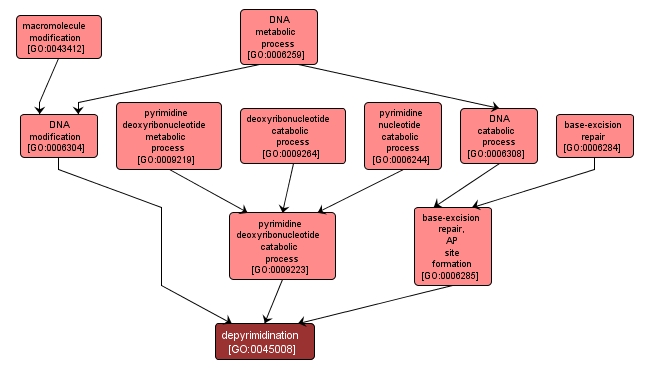GO TERM SUMMARY
|
| Name: |
depyrimidination |
| Acc: |
GO:0045008 |
| Aspect: |
Biological Process |
| Desc: |
The disruption of the bond between the sugar in the backbone and the C or T base, causing the base to be removed and leaving a depyrimidinated sugar. |
|

|
INTERACTIVE GO GRAPH
|














